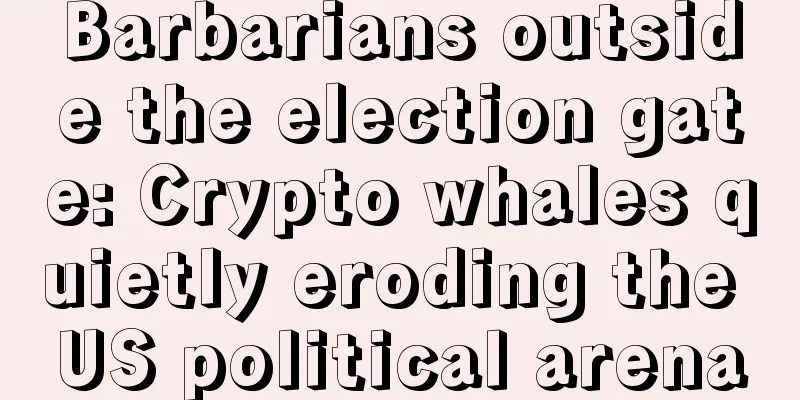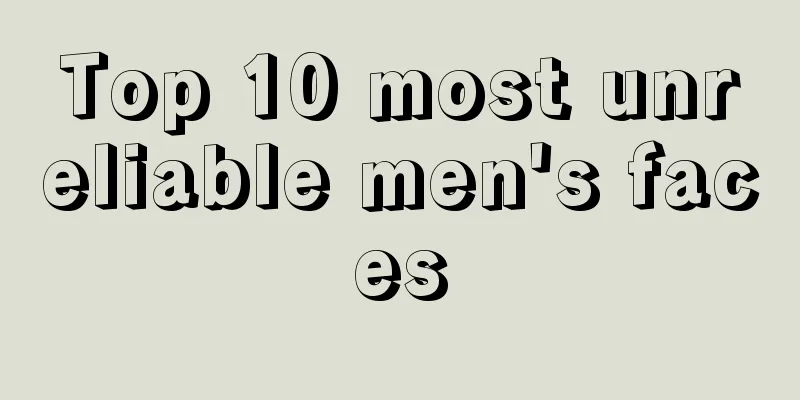Is there still a chance for fair mining now?

|
Fairness is one of the reasons why Bitcoin, a decentralized network, is so attractive. Starting with an ordinary computer, players can easily mine. In 2013, a player with 60 mining machines could mine 55 bitcoins a day, and an average mining machine could mine 0.91 bitcoins a day. According to the price of that year, the price of bitcoin mined by a mining machine in one day was 6,374 yuan. As more and more miners join the network, the computing power of the entire network continues to increase. Even if ordinary people buy professional mining machines, it is difficult to mine Bitcoin directly. They can only connect the computing power to the mining pool to obtain benefits. According to the data of the CoinIn mining pool, a mining machine with a computing power of 32T can only mine 0.0012 Bitcoins a day, which is worth 72 yuan. Obviously, Bitcoin mining can no longer return to its original state, and fair mining no longer exists for ordinary players. Grin’s Experiment At the beginning of this year, Grin, which claims to be the fairest after Bitcoin, became very popular. PoW consensus mechanism, no pre-mining, no financing, and its algorithm is close to the people. 90% of the graphics cards are used for mining, and 10% of the Asic mining machines are used for mining. The practice of closer to decentralization and fair mining makes people think that this may be the next generation of Bitcoin. Every ordinary person has an equal opportunity to obtain Grin. However, things did not develop as people imagined. Originally, the mining requirement for Grin was 8GB of video memory at the minimum, and the configuration of GTX1070ti required a minimum expenditure of 2,500 RMB. According to this requirement, ordinary game users with this configuration of computer at home also have the opportunity to mine blocks. However, the mining pools found a way to modify the mining system so that the P106-100, a professional low-video memory mining card, can also mine Grin. This card is useless to ordinary people and cannot be used as a graphics card, but mining pools specializing in mining like it very much, and the cost is greatly reduced. A second-hand P106 mining card only costs 300-500 yuan on the second-hand trading platform. The addition of mining pools has caused Grin's computing power to surge, completely changing the fair atmosphere that Grin originally envisioned. Ordinary users can't mine blocks with high-configuration graphics cards like 1070ti. Two P106 mining cards cost 600 yuan, and the combined computing power is close to the computing power of 1070ti, which costs 2,500 yuan. If people want to get Grin, it is basically impossible to mine it by themselves, and they still have to find mining pools and get it from them. In the current environment, experiments have proven that it is impossible to achieve fair distribution of tokens solely through PoW consensus. If PoW doesn’t work, what about a hybrid consensus of PoW plus PoS? Recently, a hybrid consensus project, En-Tan-Mo, has attracted our attention, which may be able to solve this problem to some extent. En-Tan-Mo, the Spring of Ordinary Miners En-Tan-Mo is not the first hybrid consensus project. Decred uses the consensus of PoW and PoS, and has found a balance for the time being. PoW is responsible for block generation, and PoS is responsible for verification. Miners mine coins and sell them, and coin holders use their coins to pledge to the ticket pool to receive income. Even the famous PlaceHolder in Silicon Valley is very interested in this hybrid consensus of PoW and PoS. This top VC that has invested in well-known projects such as 0x and MakerDao has also invested in Decred based on hybrid consensus. Obviously, it is feasible to combine PoW and PoS on a chain to form a consensus. So, what does En-Tan-Mo, which also combines the two, look like? How the UPoS consensus mechanism works En-Tan-Mo's consensus mechanism UPoS can be divided into two parts: PoS and PoW: In the PoS part, users, as voters, lock their ETM in exchange for voting rights and start voting for miners. The number of locked tokens is converted through a formula to form voting rights, which are used to vote for miners. After the miners get the votes, they will combine past performance and other factors to finally select 101 miners to be responsible for block generation. In the PoW part, miners produce blocks in a random order, and the name of the miner of the next block will be displayed after the previous block is completed. After the miner produces a block, he verifies the block and finally generates a block. Miners who fail to produce a block or fail to verify return to the random order stage and repeat the process. In this new consensus mechanism, there are several key areas that are key to solving fairness issues, including the voting stage, the order in which miners produce blocks, and the protection of the rights and interests of unselected nodes. Voting Phase Generally speaking, the number of tokens held by a holder is the weight of the vote. Taking the EOS network as an example, if I have 100 EOS and I vote all of them for one node, and one EOS is one vote, then the votes that the node gets from me are 100. The problem is that the more EOS voters have, the more advantages they have in voting, and the easier it is for large voters to influence the voting results. In order to solve this problem, ETM added two settings in the voting process: time coefficient and suppression coefficient. Users can obtain voting qualifications after locking up their positions. The locked amount is not the number of votes, and the final voting rights can only be obtained by converting it with these two coefficients. The time coefficient of ETM allows the votes of retail investors to grow exponentially with the passage of time, giving small investors the opportunity to have the same amount of rights as large investors. Similarly, the suppression coefficient is also intended to suppress the role of large investors in the network and prevent the En-Tan-Mo network from falling into an oligopoly like EOS. Obviously, in the voting process of ETM, the advantages of large or oligarchs in the previous voting form no longer exist, and the rights of small investors and retail investors are expanded, and they may even have the same influence as large investors. Just like if the top 21 nodes in the EOS node list are often rotated by the nodes behind, the degree of decentralization will be much better than it is now. Miners block order In terms of the order in which miners produce blocks, ETM has chosen a random sorting method called chaotic sorting. By making very small changes to the initial value, the result is greatly disturbed. In addition to fairness, this randomness also brings security. Generally, the order of blocks produced by a public chain can be found on the chain, and users can see the complete list of blocks produced. For example, EOS blocks are sorted by the first letter of the node's main network account name, which also gives hackers the opportunity to prepare in advance and calculate which node will produce blocks and when. Some hackers transferred EOS assets worth 60 million yuan in the 6 seconds when the games.eos node without a blacklist was producing blocks. In the ETM network, the order of block generation is random and there is no fixed order. Only after the previous block is completed, the miner who will generate the next block will be determined, which ensures network security to a certain extent. In addition to security, fairness is also one of the goals of random sorting. The random order of blocks can be said to be a manifestation of decentralization to a certain extent, which ensures fairness within the system. This method can also be provided to second-layer DApp developers to ensure fairness in the ecosystem. Protection of rights of unselected nodes In addition to ensuring network fairness to the greatest extent possible during voting and miner block production, ETM still has ways to protect the rights and interests of those miners who are not selected. In one UPoS cycle, only 101 miners can be selected by En-Tan-Mo, and there will inevitably be many unselected miners. These unselected miners will not continue to wait until they are selected to start working. Within the En-Tan-Mo ecosystem, they can go to other blockchains to mine, such as Ethereum. This mechanism is called "double mining". This is also a reflection of the fairness of the network. No matter what identity one uses to participate in the En-Tan-Mo network, users will gain benefits. Selected miners can mine and obtain ETM, unselected miners can obtain token rewards from other chains, and voters who vote for miners can also obtain ETM rewards. Suppressing oligopoly Experiments have proven that it is difficult to create a fair mining environment in a network that relies solely on PoW consensus. Under the PoW consensus mechanism, computing power is the most authoritative, and those who have computing power have the right to speak, which also led to Bitmain's dominance of the BCH fork. In the En-Tan-Mo network, although it is still PoW mining, computing power is no longer authoritative. Voters' votes, miners' performance and other factors will determine the miners' block output. No matter how much computing power a miner gets, he still cannot mine ETM without votes. This is a UPoS consensus network that combines the characteristics of PoW and PoS. In the voting phase of En-Tan-Mo, time coefficient and suppression coefficient are added to change the phenomenon that large investors have absolute control over the voting process. The voting rights in the hands of retail investors can also have the same influence as those of large investors. Chaotic random sorting is used to confirm the block order of miners, and the "double mining" method is used to guarantee the rights of unselected miners. All of these are to ensure the fairness of the entire network. The oligopoly effect will be almost eliminated on ETM. A secure random algorithm runs through the entire ecosystem. Unselected miners can also receive rewards. En-Tan-Mo ensures the fair atmosphere that the network is committed to creating at every step. Without the authority of PoW and the oligopoly of PoS, can En-Tan-Mo's experiment create a fair, secure, and decentralized network? BlockBeats can't wait to see the results after the launch. |
>>: Forbes: Billionaire loves Bitcoin and wants to buy 4.5 million Bitcoins through a crypto broker
Recommend
How do women tell fortunes by looking at faces?
Fortune telling by face reading has been popular ...
What does it mean if a man has a mole on his mouth?
Different moles actually have different fortunes,...
The Five Elements Theory on the Buttocks
The five elements are represented by wood, fire, ...
Bitfinex suspends deposits, and frequent problems cause investors to worry
An announcement by Bitfinex, one of the world’s l...
How to use face reading to predict marriage. Which face reading will lead to the happiest married life?
How to use face reading to predict marriage, what...
Is it difficult for women who can’t close their mouths to make money? What kind of mouth shape is good?
Everyone hopes that they will have good fortune i...
What does a woman with a big nose mean?
It is believed that women with big noses will hav...
What does a mole on the front of a woman’s neck mean?
Moles are very familiar to people, and different ...
Palm reveals a man's sexual ability score★ Palm lines★
The thickness below the thumb is like a meat ball...
Your health, the color of your palms can tell you secretly
Palmistry mainly predicts destiny through the pal...
How to read the health of palm lines
The lines on the palm not only predict a person&#...
After the Bitcoin halving event: the bull market that failed to meet its promise, the anxious miners and the whales that absorbed the funds
Over the past week, Bitcoin miner Zhang Zhang has...
Ethereum upgrades to proof of stake, why can't Bitcoin?
There’s no technical barrier to making the notori...
The red birthmark grows on the back of the neck. It depends on the gender.
Birthmarks are something that many people hate, b...
Is it good to have protruding ears? People with protruding ears are destined to be rich.
Protruding ears are considered a bad feature in m...









